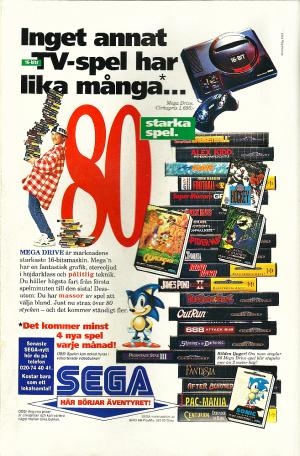
Sega Mega Drive
Sega Mega Drive Specifications
| Manufacturer: | Sega |
| Developer: | Sega |
| CPU: | 16 bit Motorola 68000 CPU clocked at 7.6 MHz |
| Memory: | 72 KB of RAM |
| Graphics: | YM7101 VDP with 64KB of Video RAM |
| Sound: | Yamaha YM2612 FM synthesizer and Texas Instruments SN76489 PSG; controlled by Zilog Z80 sub-processor |
| Medium: | ROM cartridge |
| Display: | Display up to 61 colors at once from a palette of 512 |
| Controllers: | 2 |
The Mega Drive (メガドライブ), called the Sega Genesis in North America and Super Gam*Boy (수퍼겜보이), later Super Aladdin Boy (수퍼알라딘 보이) in South Korea, is a cartridge-based video game console developed by Sega in 1988.
Most Europe countries have this versions and not the Genesis. The games do not even mention Genesis on their covers.
Sega Mega Drive, or Sega Genesis as it was known in North America, is a 16-bit video game console that was released by Sega in 1988. It was Sega's third console and competed with the Super Nintendo Entertainment System (SNES). The Mega Drive was known for its impressive graphics and sound capabilities, which helped it become one of the most popular consoles of the 16-bit era.
The Mega Drive had a number of classic games released for it, including Sonic the Hedgehog, Streets of Rage, and Phantasy Star. It also had a number of peripherals available, such as the Sega CD add-on and the 32X, which allowed it to play 32-bit games.
The Sega Mega Drive was a successful console for Sega, selling over 30 million units worldwide. It remains a beloved console among retro gaming enthusiasts to this day.
Codenamed the Sega Mark V during development, Mega Drive is Sega's fifth video game console (following the SG-1000, SG-1000 II, Sega Mark III and Sega Master System) to be released, but only the second substantial hardware upgrade. The Mega Drive's selling point was its 16-bit main processor, with in adddition to superior graphics capabilities, allowed for a more advanced gaming experience previously limited to the arcades.
The Mega Drive is Sega's most successful video game console, with 40 million hardware units sold worldwide, including more than 20 million in the United States, over 9 million in Western Europe, 3.58 million in Japan, and 3 million in Brazil. It has a software library consisting of more than one thousand games; more than previous generations of Sega hardware combined.
As well as competing with Nintendo's Famicom (NES) and later Super Famicom, Sega also found itself fighting against NEC's TurboGrafx-16 (PC Engine in Japan), SNK's Neo Geo, the Atari Jaguar, and numerous home computers, driving the term "console war" as it attempted to acheive market dominance. While the Super NES ended up surpassing the Mega Drive in worldwide hardware sales (49 million), more software was sold for Sega's console, and its 16:1 attach ratio was double that of the SNES.
The Mega Drive saw two major expansions to extend its shelf life, first with Sega Mega-CD in 1991 and later the Sega 32X in 1994. The Mega Drive would be succeeded by the Sega Saturn (also released in 1994), though was still receiving officially licensed games as late as 2000.
The Mega Drive was envisioned at the next technological step over other video game consoles available at the time. It is a "16-bit" machine, named after its use of a 16-bit CPU (in this case, the Motorola 68000), and was marketed as being superior to popular "8-bit" consoles dominating the market at the time, usually the Nintendo Entertainment System (NES) but sometimes its immediate predecessor, the Sega Master System. 16-bit CPUs had been gaining popularity since the mid-80s, were widely used in arcade machines, and were almost expected to be found in new home computers - it was therefore considered logical that the next "generation" of dedicated video game consoles should follow suit.
The Mega Drive builds on technology found in the Master System (and with adaptors, is fully backwards compatible), though as well as upping the technical specifications for more demanding gameplay, sound and graphics, makes a number of crucial changes to the design of consoles which continue to this day. Firstly it added a third face button, C, to the (now ergonomically designed) control pad. The Mega Drive outputs sound in stereo, and makes an attempt to region lock games through software. Also, when utilising the right cables, the Mega Drive is natively able to produce a clearer image than its rivals (on top of its already higher resolution 320x240 display).
All Mega Drives ultilise a top-loading design (as opposed to the cumbersome VCR-style cartridge loading of the Western NES), while having removable controllers (unlike the Famicom). It was designed from day one to allow hardware expansions, and its use of dark plastic means that the "yellowing" of older systems (from bromine-based flame retardants reacting with oxygen) is less of an issue.
The original Mega Drive measures 28 cm×21.2 cm×7 cm. The top of the unit is split into two components: a circular emboss with the cartridge slot and a tagline (which was omitted on later versions), and a control panel containing the power and reset buttons and the volume slider for the headphones jack. Audio output through the original model was mono through the A/V port, while the headphone jack was used for stereo sound. A third DE-9 port on the back of the unit provided additional peripheral support, though was removed from later revisions.
Asian, Japanese and South Korean models have a cartridge locking mechanism which prevents cartridges from being removed when the power is on (which is why "Eastern" cartridges, as well as the Sonic & Knuckles cartridge and various others, have a cut-out on their left sides). Later runs included the TradeMark Security System, missing in early builds causing small compatibility issues, despite the feature having been planned early on.
Latest on Sega Mega Drive
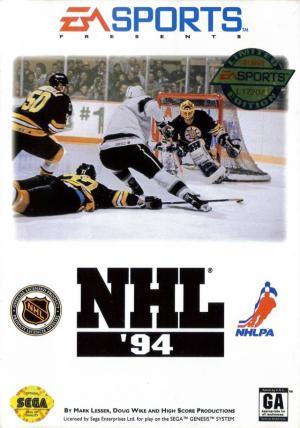
NHL Hockey 94
Over 25 NEW features in HOCKEY '94! 4-Way Play Support - Use the EA Sports 4-Way Play and NHL '94 becomes a 1, 2, 3 or 4 player game! Goalie Control -...

GunSlugs
GunSlugs is a Sega Genesis / MegaDrive conversion of the hugely popular run'n'gun game by OrangePixel. Fight the evil Black Duck army as they try to t...
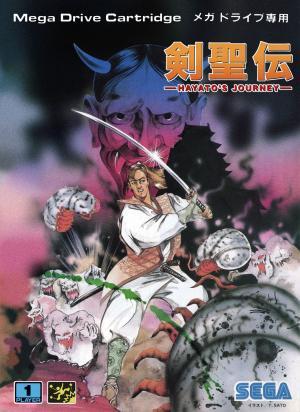
Hayato's Journey
Hayato is the last descendent of the Great Hayato, a legendary member of the Dragon family that fight against the evil Warlock centuries ago. On this ...
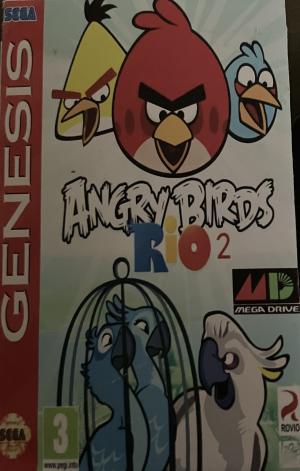
Angry Birds Rio 2
Homebrew physical copy of Angry Birds Rio 2 for SEGA Megadrive/Genesis.
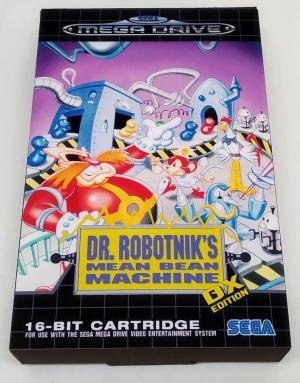
Dr. Robotnik's Mean Bean Machine - DX Edition
This DX EDITION has the following improvements: Sonic replaces Has-Bean (original art by E-122-Psi). New improved dialog for Dr. Robotnik ...
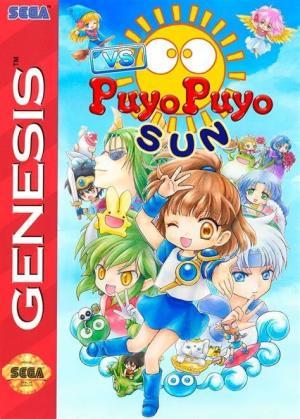
VS Puyo Puyo Sun
VS Puyo Puyo Sun, known as Futari de Puyo Puyo Sun (ふたりでぷよぷよSUN) in Japan, is a stripped-down port of Puyo Puyo Sun for the Sega Mega Drive, released ...
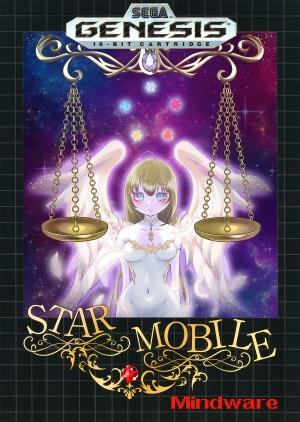
Star Mobile
Star Mobile (スターモビール) is a puzzle game originally released for X68000 computers and later CD-ROM² hardware. Although a Sega Mega Drive port was develo...
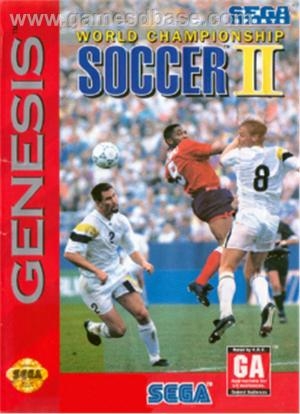
World Championship Soccer 2
World Championship Soccer 2 is a football/soccer game released for the Sega Genesis/Mega Drive systems in 1994. The player can choose between many dif...
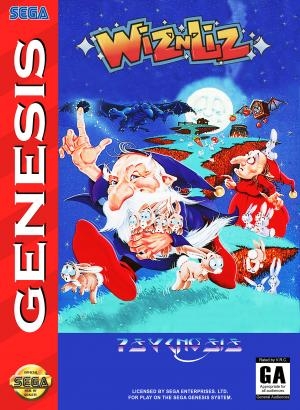
Wiz 'n Liz
Wiz 'n' Liz: The Frantic Wabbit Wescue is a platform game developed by Raising Hell Software for the Amiga and Sega Mega Drive and published by Psygno...
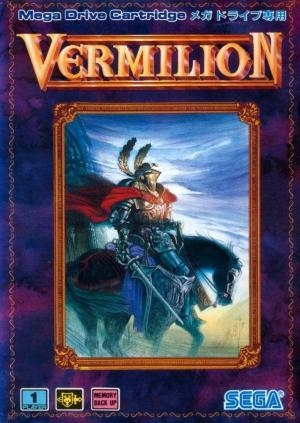
Vermilion
Sword of Vermilion is about the son of Erik, king of Excalabria, who takes on a quest of revenge to defeat Tsarkon and free the world of Vermilion fro...